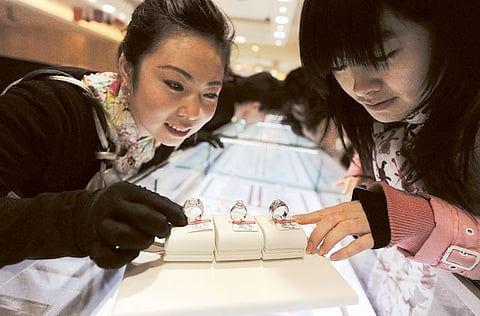Ensuring diamond prices are high forever
Keeping a tight grip on demand and supply works a charm with diamond prices

In the 1600s, people believed a tulip bulb was worth more than its selling price, increasing demand on it and making it among the top exports in Netherlands.
The initial belief of the real worth of a tulip bulb, which of course exceeded selling price, drove entire markets into a series of speculations that when built on one another created a bubble of inflated prices. It burst when people were reminded that these are just flower bulbs, i.e., they will grow and die in a few days.
And so an episode that started with a false belief and ended with a sharp drop in prices was referred to as the famous “Tulip Mania”, or what is addressed often as the first financial bubble in the history of human beings. The value that a tulip bulb carried was what people thought it was worth.
Because the value in their minds exceeded whatever the quoted or charged price was, their willingness to pay more inflated demand and prices which lead to a spiral of speculations.
How much you are willing to pay for something is how much you perceive it to be worth, regardless of the actual value or quoted price. For instance, two can afford a Dh500,000 car, but only one buys it because of their perception of its worth, i.e. the worth to that specific buyer is higher than the quoted price.
The greater the difference between a price and what you perceive it to be worth, the more you are willing to buy it. In the market of diamonds, our main example here, perception was created and then promoted.
To illustrate; there is basically one major supplier, referred to in the article as Company A, that buys all diamonds extracted from mines all over the world but then doesn’t sell them back in the market. It stores them in vaults with only a small portion of what they own being sold to distributors or to major chains of jewellery shops.
Once supply is controlled, they ensure that all distributors market diamonds as a product that can be kept forever. If people are always reminded of the high worth of a product, they will always pay higher prices when they can afford doing so. And so, yes, you can eventually charge even higher prices than the already high ones as long as you maintain a high worth image in the minds of consumers.
The scenario described above was going to change when diamond mines were discovered in Australia. A company there, which I will refer to as Company B, started extracting diamonds and selling them at lower than market prices to compete and to establish brand awareness.
And as naïve as a new entrant can be, it lacked the basic knowledge of how things are done in such an industry. Their ‘dumping’ strategy did not work very well for them as Company A, controlling the entire supply of diamonds, drove the whole market down by increasing its supply significantly as well as lowering its prices.
Company B, which has just tapped into the market, started losing money to a point that it adhered to Company’s A monopolistic powers by selling their extracted diamonds to Company A at a pro-rated price.
As a result of a very well-established monopoly, an inflated perceptual value of diamonds has been maintained. Once supply is controlled and perception is promoted to create demand and inflate it, which also means overcoming price sensitivity barriers within certain markets, products like diamonds with no actual worth can be sold at whatever prices by suppliers.
To conclude, the Basic Economics 101 concept of demand and supply is being applied here, along with partial consideration of the main concept of price elasticity. Supply is controlled and demand is created even in price-sensitive markets, where demand might have never existed or barely did, by excessive marketing campaigns.
As time passed, people acquired what was once a missing perception of the true value of diamonds. Accordingly, the artificially created value was constantly increased and higher prices were charged.
In a way, the latter explains the change in taste from gold to diamonds. Gold, which was once the basis of currency printing and circulation, is now merely a safe house for investors in peace and crisis times, as well as dowry for some South-east Asian countries.
Also, a highly maintained perceptual value explains why someone will be willing to pay twice the original price for a product when another would pay only half of it. Now, the last thought I want to leave you with is this: why do you think diamonds lose so much value when they are re-sold?
The writer is a commercial consultant and a commentator on economic affairs. You can follow him on Twitter at www.twitter.com/aj_alshaali
Sign up for the Daily Briefing
Get the latest news and updates straight to your inbox



